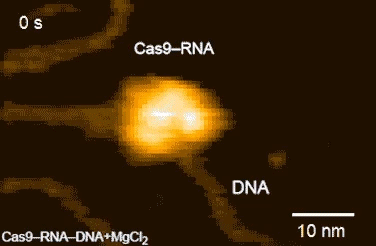10 February 2018
On Tuesday, +SpaceX successfully launched the Falcon Heavy from Cape Canaveral and claimed the title of most powerful rocket currently in operation. Its 27 Merlin 1D engines provide a total of 22,819 kN of thrust at launch, allowing it to carry up to 63,800 kg of payload to low Earth orbit. This ranks as the fourth highest capacity rocket ever built after the Saturn V (140,000 kg), Energia (100,000 kg), and N1 (95,000 kg). However, the ability to reuse the first stage and booster rockets will make the Falcon Heavy considerably cheaper to operate. While the Falcon Heavy was originally designed to carry humans back to the Moon and eventually Mars, it will be limited to launching large satellite payloads for the foreseeable future.
Source: https://youtu.be/wbSwFU6tY1c (SpaceX)
#ScienceGIF #Science #GIF #SpaceX #FalconHeavy #Falcon #Heavy #Boosters #Rocket #Space #Launch #Liftoff #Reusable #Payload #Orbit #Mars #ElonMusk #CapeCanaveral #Cape #Canaveral #Florida
View Original Post on Google+
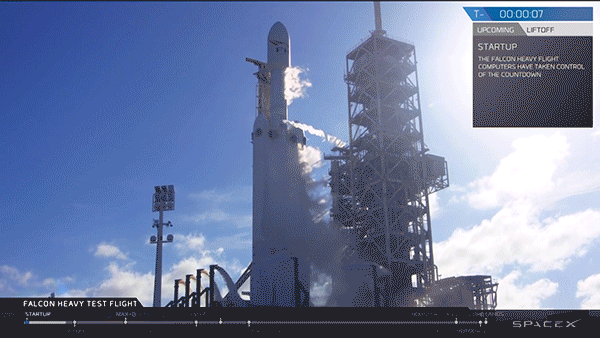
6 February 2018
+SpaceX successfully tested its new Falcon Heavy launch system earlier today by propelling a dummy payload of founder Elon Musk ‘s +Tesla Roadster into orbit around the Sun. The Falcon Heavy consists of a strengthened Falcon 9 rocket core with two Falcon first stages as strap-on boosters. All three rockets are reusable and designed to land vertically after separating from the delivery vehicle.
Here, the two Falcon 9 boosters can be seen landing simultaneously in Cape Canaveral, FL. The central core was supposed to land on a remote drone ship in the Atlantic Ocean but all signs indicate it was likely lost during re-entry. Despite this, the maiden flight of the Falcon Heavy was declared a resounding success and promises to usher in a new era of cheaper orbital delivery costs.
Source: https://youtu.be/wbSwFU6tY1c (+SpaceX)
#ScienceGIF #Science #GIF #SpaceX #FalconHeavy #Falcon #Heavy #Boosters #Landing #Rocket #Space #Launch #Liftoff #Reusable #Payload #Orbit #Mars #ElonMusk #CapeCanaveral #Cape #Canaveral #Florida
View Original Post on Google+

3 February 2018
Holograms have been a staple of science-fiction for decades yet they are commonly misrepresented in popular culture. According to physics, a hologram is a photographic recording of how light scatters from an object that can be displayed in a manner that appears three-dimensional. So when R2-D2 projects Princess Leia ‘s message in the original Star Wars movie, it technically is not a hologram because it could be viewed from any orientation. What it is is a visual representation of an object in three physical dimensions known as a volumetric display.
Researchers at Brigham Young University have created a volumetric display system that uses photophoretic optical trapping to produce three-dimensional color graphics. Photophoresis is a phenomenon that allows small particles in air to be captured and precisely moved using a laser. As the particle is rapidly scanned through the display volume, it is selectively illuminated using red, green, and blue lasers to create various colors. The result is a three-dimensional image in free space that can be viewed from any angle without the limitations of current holographic or light-field technologies.
Source: https://goo.gl/TFLjDC (Nature News)
Journal Article: https://goo.gl/4EVDRW (Nature)
#ScienceGIF #Science #GIF #Volumetric #Display #Hologram #Photophoretic #Optics #Optical #OpticalTrap #Laser #Light #Projection #Raster #Nature
View Original Post on Google+
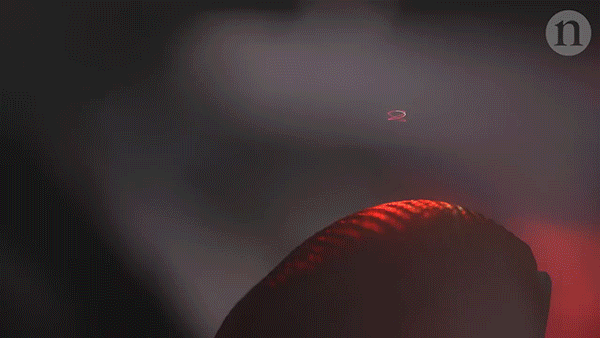
27 January 2018
Scientists have harnessed the power of humidity to create self-locomotive microrobots called hygrobots. This actuator-ratchet system was inspired by motile plants and uses a hygroscopic-responsive film of aligned nanofibers that swell and shrink in response to changes in humidity.
As the relative humidity of the surrounding air oscillates between 20 and 85%, the structure of the bilayer actuator abruptly changes. Directional ratcheted locomotion is achieved because of differences in the friction coefficients of the end tip and knee of the legs.
Source: https://goo.gl/qTY9xK (Science Robotics)
#ScienceGIF #Science #GIF #Robotics #Hygrobot #Microbot #Actuator #Ratchet #Locomotion #Humidity #Hygroscopic #Oscillation #Motion #Movement #ScienceRobotics #Fiber #Swell
View Original Post on Google+
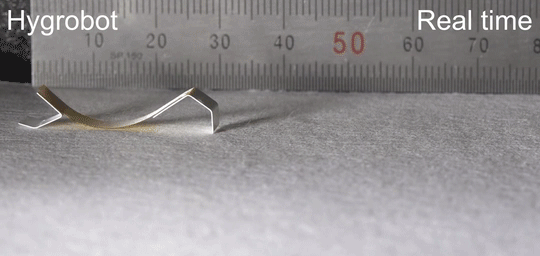
20 January 2018
Earth’s global surface temperatures in 2017 ranked as the second-warmest on record since 1880, according to a new analysis by +NASA. The global average in 2017 was 1.62°F (0.9°C) warmer than the 1951-1980 mean, falling just behind the record set last year. The measurement is accurate to within 0.1°F and takes into account the location of 6,300 weather stations and variations in measurement technique.
The global increase in temperature was also accompanied by increasing extreme weather events in 2017. Many regions experienced record-breaking high and low temperatures during the year, a side effect of global warming long-predicted by climate scientists.
Source: https://goo.gl/XWV5vC (NASA)
#ScienceGIF #Science #GIF #Climate #Climatology #Temperature #Surface #Global #Earth #Satellite #NASA #NOAA #ClimateChange #GlobalWarming #Map #GISS #Goddard #Weather #Sensor
View Original Post on Google+
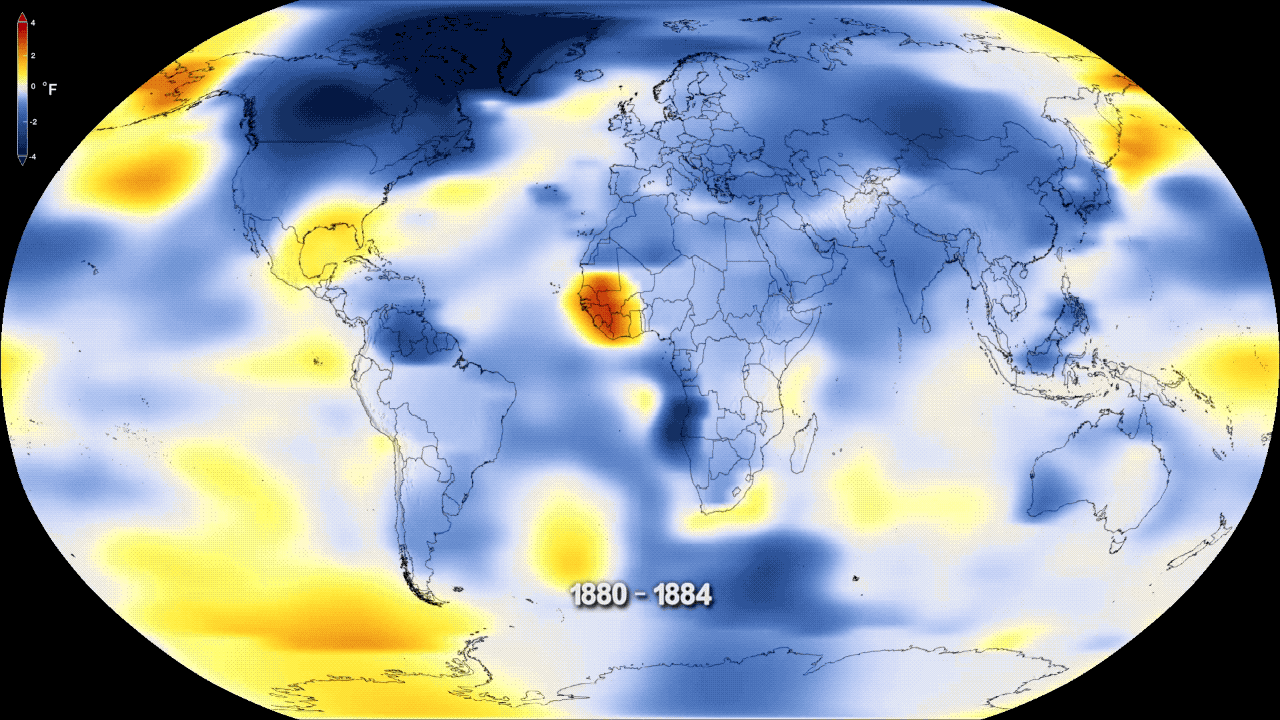
13 January 2018
There is growing interest in studying chemical systems capable of autonomous shape changes and self-motion. When a droplet of dichloromethane (CH2Cl2) is placed in an aqueous surfactant solution, cohesive motion is spontaneously generated. The droplets can pulsate, form multi-armed rotors, and arrange into polygonal shapes. The motion is driven by a combination of evaporation, solubilization, and surfactant transfer that all lead to Marangoni instabilities along the fluid interface.
Source: https://goo.gl/S1cDKT (Angew. Chem. Int. Ed.)
#ScienceGIF #Science #GIF #Physics #Chemistry #Dissolve #Dichloromethane #Surfactant #Solution #Droplet #Complex #Spiral #Rotor #Splitting #Dynamics
View Original Post on Google+
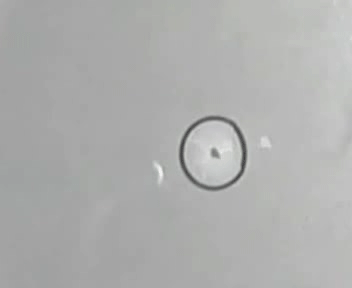
23 December 2017
Last night +SpaceX gave Southern California quite the lightshow with its final Falcon 9 launch of the year from Vandenberg Air Force Base. The Iridium-4 mission was the fourth set of satellites delivered by SpaceX for Iridium’s next generation global satellite constellation.
The light of the setting Sun highlighted the contrail of the Falcon 9 as it accelerated into the upper atmosphere. The shutoff of the first stage and ignition of the second stage can be clearly seen in the billowing plume. The first stage of the rocket can also be seen falling back to Earth as the payload continues onwards.
Source: https://youtu.be/tE5C3O71Xqo (Doug Ellison)
#ScienceGIF #Science #GIF #SpaceX #Falcon9 #Iridium #Vandenberg #California #Sunset #Sky #Horizon #Sun #Contrail #Clouds #Rocket #Stage #Separation #DJI #Mavic
View Original Post on Google+

9 December 2017
Schlieren photography is an optical imaging technique that allows for the visualization of small differences in index of refraction. This makes inhomogeneities, such as temperature, pressure, or composition, in normally transparent materials easily observable with a camera.
Hot air rising upwards from an open flame results in billowing clouds when imaged with this technique. This occurs because hot air refracts light slightly differently than the cooler air around it (i.e. hot air has a different index of refraction). A schlieren camera is extremely sensitive to the resulting changes in optical path caused by these variations.
The schlieren phenomenon was first discovered by Robert Hooke in 1665 but the current technique was not developed until the mid 19th century by the physicists Jean Bernard Léon Foucault and August Toepler. It was originally used to detect flaws in glass used for making lenses but has since been adopted for studying aerodynamics and fluid flow.
Source: https://youtu.be/mLp_rSBzteI (Harvard)
Learn More: https://youtu.be/4tgOyU34D44
#ScienceGIF #Science #GIF #Schlieren #Photography #Optics #Index #Refraction #Air #Optical #Flame #Physics
View Original Post on Google+
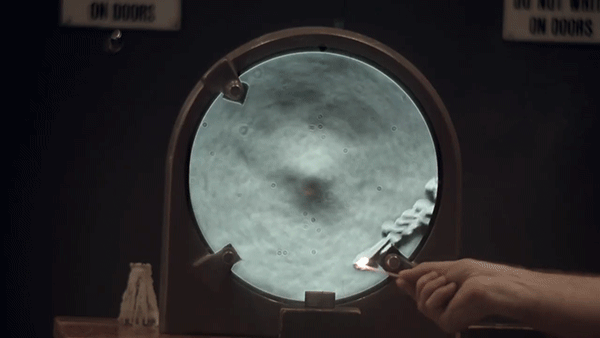
2 December 2017
Aerosols are small particles or liquid droplets in the air that can be tracked to better understand the dynamics of our atmosphere. This computer model was created by NASA’s Global Modeling and Assimilation Office to visualize the movement of sea salt, dust, and smoke across North America and the northern Atlantic Ocean.
Smoke from the forest fires in the Pacific Northwest can be seen billowing across the continent while dust from the Sahara Desert is blown all the way to the Gulf of Mexico. Numerous hurricanes can be seen traversing the Atlantic Ocean and impacting the Caribbean Islands and the United States mainland.
NASA used its Goddard Earth Observing System mathematical models in conjunction with observation satellite data to produce this complex representation of the currents of the atmosphere. These models help provide a better understanding of our planet ‘s weather and climate.
Source: https://svs.gsfc.nasa.gov/12772 (NASA Goddard)
#ScienceGIF #Science #GIF #Aerosol #Sea #Salt #Dust #Smoke #Atlantic #Ocean #NASA #Goddard #GMAO #GEOS #Model #Hurricane #Harvey #Irma #Jose #Storms #Atmosphere #Climate #Weather #Supercomputer #Simulation #Visualization
View Original Post on Google+
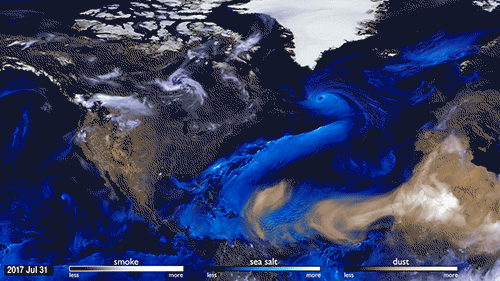
25 November 2017
Scientists have used atomic force microscopy to visualize the real-time dynamics of CRISPR-Cas9 as it binds and cleaves a strand of DNA. The high speed imaging technique captures the Cas9 enzyme as it searches for, binds to, and cuts a matching DNA sequence. CRISPR has received extensive media coverage over the past few years because of its ability to easily edit genetic material.
Source: https://goo.gl/VVqavp (Gizmodo)
Nature Communications : https://doi.org/10.1038/s41467-017-01466-8
#ScienceGIF #Science #GIF #CRISPR #Cas9 #RNA #DNA #Molecule #Protein #Cleavage #Edit #Gene #Genetics #Biology #Biochemistry #Microbiology #Nucleotide #AminoAcid #Atomic #Force #Microscopy
View Original Post on Google+
